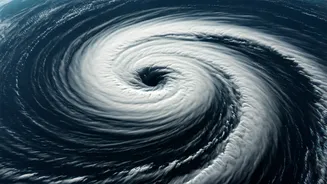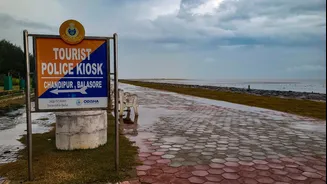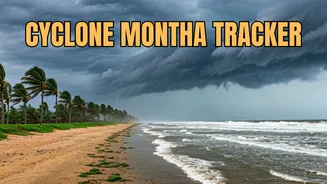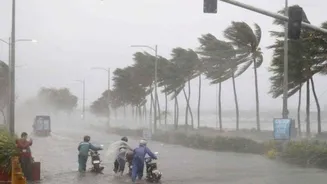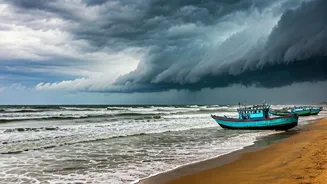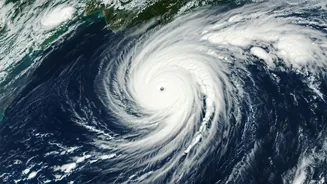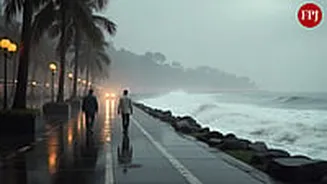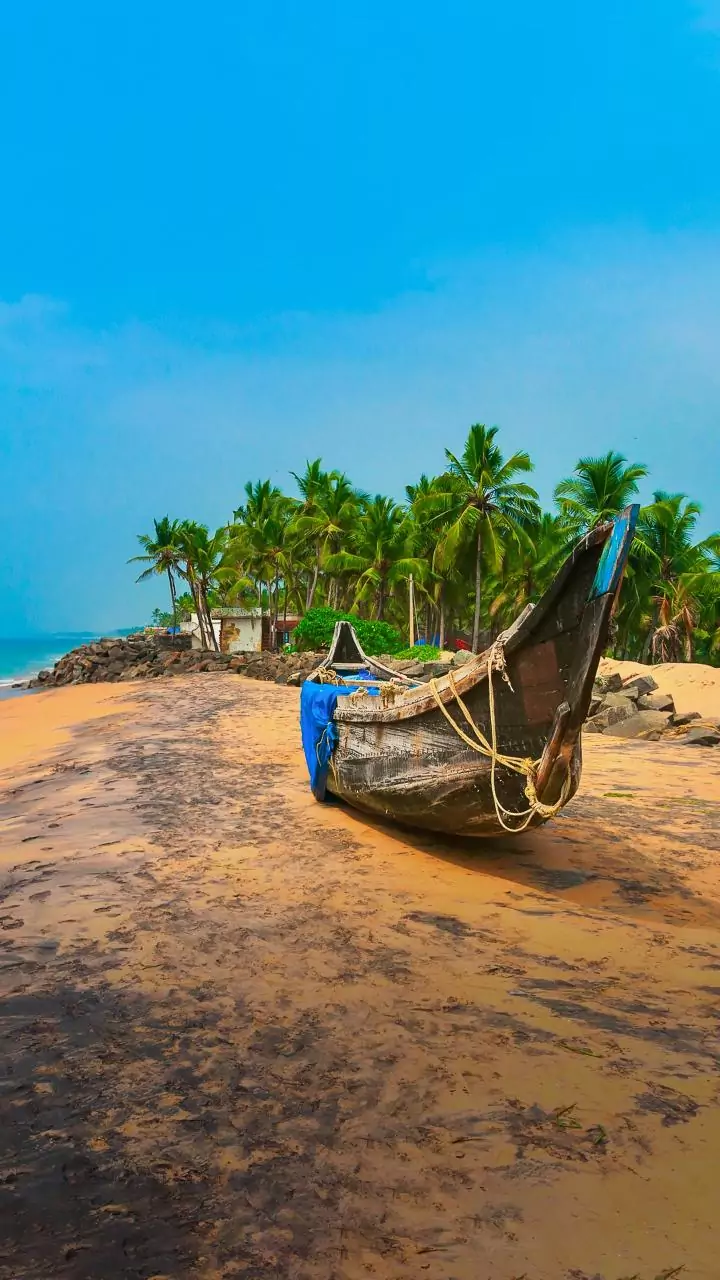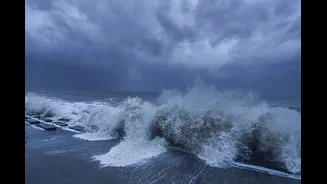What is a Cyclone?
Cyclones are intense, rotating weather systems characterized by low pressure at their center and strong winds. They originate over warm ocean waters near
the equator, where the air is moist and unstable. The formation begins when warm, moist air rises, creating an area of low pressure below. As this air rises, it cools, and the water vapor condenses, forming clouds and releasing latent heat, which further fuels the storm. This process causes the air to spin due to the Earth's rotation, resulting in the formation of a cyclone. These rotating storms are categorized based on their wind speeds, with the most powerful being hurricanes, typhoons, or cyclones, depending on the region. Their impact can be devastating, bringing heavy rainfall, storm surges, and high winds, often causing significant damage and posing a threat to human life and infrastructure.
Bay of Bengal Cyclones
The Bay of Bengal is particularly susceptible to cyclones due to its unique geographical conditions. The warm sea surface temperatures, typically above 26 degrees Celsius, provide the necessary energy for cyclone formation. The bay's location, surrounded by land on three sides, allows for the convergence of moisture and heat, which fuels the development of these storms. The Coriolis effect, caused by the Earth's rotation, also plays a crucial role in creating the rotational force needed for cyclone formation. Additionally, the relatively shallow waters of the bay can lead to significant storm surges, exacerbating the impact of the cyclones. These factors, combined with the presence of multiple river systems that introduce freshwater, create a favorable environment for cyclone development, making the region one of the most cyclone-prone areas in the world. As a result, coastal communities in India, Bangladesh, and Myanmar are frequently affected by these powerful weather events.
Naming the Cyclones
The process of naming cyclones is a crucial aspect of their management and communication. The World Meteorological Organization (WMO) and regional specialized meteorological centers are responsible for establishing lists of names. These lists are used sequentially, and each cyclone receives a unique name. The naming system simplifies communication among scientists, disaster managers, and the public, avoiding confusion that could arise from using technical jargon or geographic references. It also helps to quickly and easily identify a specific cyclone. Names are often chosen to be culturally sensitive, avoiding offensive or controversial terms. The lists of names are prepared well in advance and are used in rotation, ensuring that there are no repetitions. This standardization enhances awareness and preparedness, helping to track, forecast, and warn communities about the potential hazards associated with these severe weather events.
Cyclone Mocha's Outlook
As Cyclone Mocha develops, it's vital to stay informed about its projected path and intensity. According to meteorological forecasts, Cyclone Mocha is expected to make landfall along the east coast, bringing with it the potential for strong winds, heavy rainfall, and storm surges. Coastal communities in areas likely to be affected should remain vigilant. Listen to updates from official sources like the India Meteorological Department (IMD) for the latest information and any warnings issued. Preparation is crucial, including securing loose objects, moving to higher ground if advised, and having an emergency kit ready. Residents should also be aware of the hazards associated with storm surges and be prepared to take necessary precautions. Regular monitoring of the cyclone's progress and prompt action can minimize the risks and keep people safe from the destructive force of this intense weather system.
